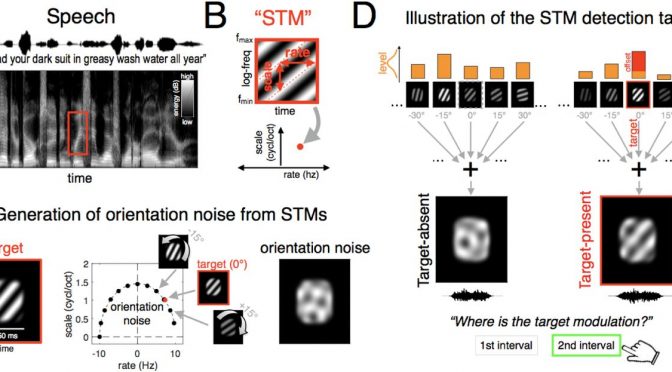Similar to the Auditory Classification Images Project, the Modulation revcorr project aims at applying the revcorr paradigm to an auditory task. Here, the focus will be on basic psaychoacoustic modulation-in-noise-detection experiments. Targets include amplitude-modulated signals, frequency-modulated signals, upward or downward ripples. Two types of noise are considered: « dimensional » noise (random vector in the target modulation domain) or white noise. In the latter case, the masking effect arises from intrinsic random envelope fluctuations in the cochlear bands. The data collected on human participants is compared to those obtained by modulation detection models.
Administrative details:
Collaborators: Christian Lorenzi, Emmanuel Ponsot
Fundings: Agence Nationale de la Recherche, projet fast-ACI (2021-2023)
Selected publications and presentations:
Varnet, L., Lorenzi, C. (2021). Probing AM detection in noise with reverse correlation. ARO 2021 (abstract, presentation, video)

